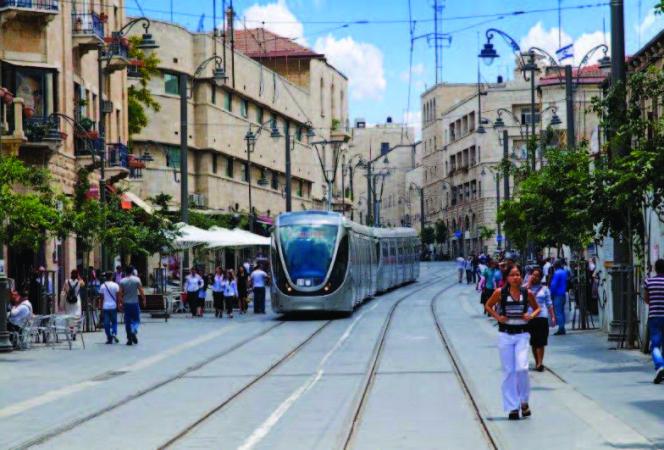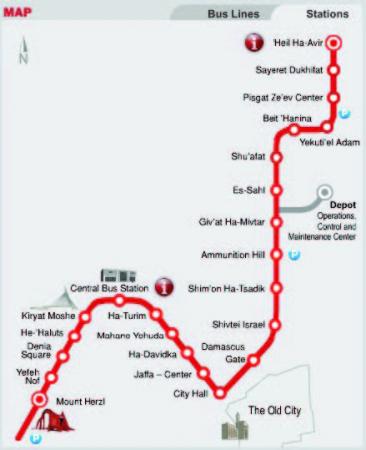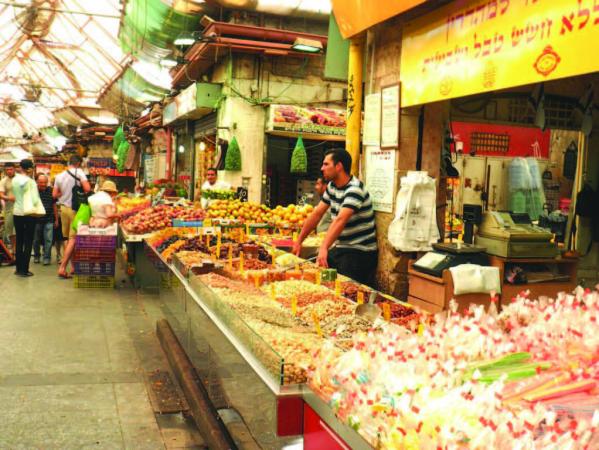The Holy City of Jerusalem, sacred to the world’s three great monotheistic religions, naturally attracts millions of tourists every year. Most cities whose economy thrives on tourism have double-decker buses that follow circular routes with stops at all the major sightseeing attractions; Jerusalem is no exception. The Egged bus company’s Route 99 runs in a two hour loop through both East and West Jerusalem, with a hop-on, hop-off feature enabling passengers to get on and off throughout the day. A taped audio guide in eight languages enhances the
impressive visual experience.
By Malcolm Ginsberg
The Holy City of Jerusalem, sacred to the world’s three great monotheistic religions, naturally attracts millions of tourists every year. Most cities whose economy thrives on tourism have double-decker buses that follow circular routes with stops at all the major sightseeing attractions; Jerusalem is no exception. The Egged bus company’s Route 99 runs in a two hour loop through both East and West Jerusalem, with a hop-on, hop-off feature enabling passengers to get on and off throughout the day. A taped audio guide in eight languages enhances the
impressive visual experience.
By Malcolm Ginsberg
While certainly recommended to any tourist as an excellent
introduction to the city, Jerusalem’s Route 99 has a particular
problem: a great part of downtown has been off-limits to vehicular
traffic since the new light rail system was inaugurated in
2012. Fortunately, the light rail is now a terrific complement to
the round-robin bus tour – and quite a bit cheaper.
For six shekels ($1.70), one can buy a ticket that is good
for three hours on the train; passengers can “jump on and
jump off” at will during this time period. Since the light
rail is meant primarily for residents and commuters, there
is obviously no audio guide. But any decent guidebook –
or downloadable city guide app – will explain the sights
along the route.
The line – controversial during its construction, because
of the years-long disruption to daily life and enormous
cost overruns – is 8.6 miles long, with 23 stops between
Mount Herzl, in the city’s southwest, and Pisgat Ze’ev,
a northeastern Jewish suburb built on land liberated by
Israel in the wake of the Six-Day War. Thus, it also serves
the Arab residents of East Jerusalem, as the tracks wend
their way past the Old City walls on the way to Jaffa Street,
in the heart of West Jerusalem’s city center; station names
are announced in Hebrew, Arabic and English, as they
scroll across LED screens in the cars – in the same three
languages. Trams are air conditioned, with large windows.
The section of the light rail which most interests tourists
extends between Mount Herzl – Israel’s equivalent of
Arlington Cemetery, also adjacent to Yad Vashem, the
international Holocaust Museum – and Mount Scopus,
the famous Har HaTzofim, with its spectacular views of
the Old City. A round-trip between the two ends of this
stretch takes about one hour and forty minutes.
Starting from the Mount Scopus end, the train passes
Ammunition Hill, site of one of the fiercest battles of
the Six-Day War, fought in June 1967. It is now one of
several official memorials symbolizing the reunification
of Jerusalem. Battleground fortifications have been
preserved, and an underground museum honoring the
fallen tells the story of the savage fighting.
Next comes Shimon HaTzadik station, named for the
location of the tomb of a High Priest during the time of
the Second Temple. Shimon HaTzadik Street is now a
“restaurant row” of good Arab eating establishments and
bars – where many young Jewish Israelis come to smoke
water pipes.
This whole area was no-man’s land between Israel and
Jordan in the period from 1948, when the State of Israel
was created, until the short 1967 war. Near Mandelbaum
Gate – Jerusalem’s “Checkpoint Charlie” during this 19-
year stretch – is the award-winning Museum of the Seam,
elucidating the “seam line” that now both divides and
unites the city’s Arab and Jewish sectors.
The elaborate Damascus Gate, or Sha’ar Sh’khem,
is one of the main entry points into the Old City – a
bustling market and shopping area between modern
East Jerusalem’s commercial district and the beginning
of the traditional Middle Eastern bazaar. At the other
end of this souk is Jaffa Gate, one of the three principal
entryways to the Jewish Quarter, the Western Wall and
the Temple Mount.
Continuing along the beautiful Old City walls, the train
runs slightly uphill, with the Notre Dame de Jerusalem
on the west side, opposite New Gate on the eastern side
(one of the few gates permitting vehicular entry to the Old
City). Built in the late 19th century as part of a French
complex of hostel, hospital and church, the Vaticanaffiliated
Notre Dame today is a hotel justly popular
with Catholic pilgrims. The hotel’s medieval-looking
towers are magnificent, similar to those of the nearby
Italian Hospital. The stunning views from the hotel’s
non-kosher rooftop restaurant rival those from its kosher
counterparts along King David Street.
Safra Square is the next stop, the access point for Jaffa Gate and home of Jerusalem’s City Hall complex. Most of the buildings in this area are from British Mandate times, including the Central Post Office and what was once the Anglo-Palestine Bank, recognizable by the still visible pockmarks from the Jordanian shelling of West Jerusalem.
Here, the tram begins to fill up: the center of the city can be very busy, often standing room only. You are now on Jaffa Street, Jerusalem’s main thoroughfare, and one of the city’s two main pedestrian malls, along with Ben Yehudah Street. The area is busy day and night, catering to patrons of the fine shops and restaurants representing most of the main cuisines known to mankind.
Just past the downtown triangle formed by Jaffa Street, King George Street and Ben Yehudah is Davidka Square, named after the crude artillery piece mounted in the plaza. Called the “secret weapon” of Israel’s War of Independence, it was not really very effective, and dangerous for operators; its one virtue was that it was noisy: the enemy ran whenever one was fired. A good place to get off for a snack is the next stop: the Mahaneh Yehuda open-air market. Still famous for its fresh produce, and free samples of halvah, it is now being transformed by the entry of trendy cafes and restaurants and gourmet shops.
Continuing westward along Jaffa, the train glides past some architectural highlights of the heart of the city: glorious buildings now being restored, many of which are slated to become expensive apartment complexes.
Just past the city’s Central Bus Station, the light railway traverses the “Bridge of Strings” or “Bridge of Chords”,
designed by the Spanish architect Calatrava. Said to be similar to a construction in Seville, its name actually derives from the musical instrument it symbolizes: David’s harp. The impressive bridge – visible for miles from Jerusalem’s western hills and highway to and from Tel Aviv – only used by the tram and pedestrians. (It also features as the cover photo for this issue of Jewish.Travel.)
After crossing the bridge, the train ascends Herzl Boulevard, taking us through the neighborhoods of Kiryat Moshe, known for its venerable yeshivas, and Beit HaKerem, one of the city’s original affluent suburbs. Finally, it stops at Mount Herzl, named after the father of modern Zionism, whose vision and drive was instrumental in the rebirth of the Jewish state. Sleek and peaceful, the tram is a perfect way to arrive.
The official website of the light rail system is:
www.citypass.co.il


